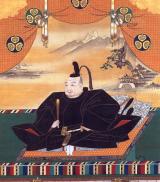谁和西鄉局约会过?
Tokugawa Ieyasu 日期为 西鄉局,从 ? 到 ?.
西鄉局

西鄉局(日语:西郷局/さいごうのつぼね Saigō no Tsubone */?,1552年—1589年7月1日),父親為戶塚忠春,母親為遠江國八名郡領主西鄉正勝之女。通稱於愛之方(日语:お愛の方/おあいのかた Oai no kata),是江戶幕府初代將軍德川家康的側室,被認為是家康最愛的側室。院號寶台院、龍泉院。
西鄉氏傳為菊池氏的一門中,跟隨三河守護代移居三河國的族人的後代。在於愛的外祖父西鄉正勝時,是在今川義元的庇護下,才足以保有在三河的影響力。母親也是在今川家的命令下,嫁給遠江國的戶塚忠春。
於愛在年少的時候就嫁人,但是丈夫早死成為寡婦。不久後,嫁給喪妻的表兄西鄉義勝做繼室,生下一男(西鄉勝忠)一女。也有說法是,西鄉義勝就是於愛的第一任丈夫。元龜2年(1571年),為了阻擋武田家先遣部隊秋山虎繁的南進,義勝在協助姻親野田菅沼氏的竹廣合戰中戰死。於愛再度成為未亡人,不過由於他所生的兒子太過年幼而無法繼任家督。
不久後,於愛成為舅父西鄉清員的養女,並在天正六年(1578年)成為家康的側室。關於成為家康侧室的說法有兩種,一是返回濱松城的途中,家康在西鄉宅邸休息時見到了於愛。另一種說法則是,於愛成為濱松城的侍女時被家康看上。
於愛是個美女,性格溫厚誠實,受到家康的信賴,並受到親近的家臣和侍女的喜愛。服侍家康一年後的天正七年(1579年)四月,生下家康三男德川秀忠,於愛成了正式的側室。翌年,生下四男松平忠吉。
於愛有相當深度的近視,據說家康戲稱重度近視的於愛為昧見姬(看不見東西的姑娘),也因為受近視所困擾,使得於愛對於近視的女性寄予同情,常常給與她們衣物飲食等生活的保障。因此在於愛死後,這些女性連日在寺門前為於愛祈求冥福。天正十七年(1589年)五月十九日,於愛逝世,享年三十八歲,法名龍泉院。墓在駿府的龍泉院(寶台院),寶永五年(1708年)五月追封正一位。
於愛和義勝的兒子勝忠後來出仕紀伊德川家的德川賴宣,由於身為二代將軍秀忠的異父兄長,西鄉一族在秀忠的治世時多受禮遇。然而,秀忠並不像家康那麼的長壽,一族的榮華相當短暫。
阅读全文...Tokugawa Ieyasu

Tokugawa Ieyasu (born Matsudaira Takechiyo; January 31, 1543 – June 1, 1616) was a Japanese samurai, daimyo, and the founder and first shōgun of the Tokugawa Shogunate of Japan, which ruled from 1603 until the Meiji Restoration in 1868. He was the third of the three "Great Unifiers" of Japan, along with his former lord Oda Nobunaga and fellow Oda subordinate Toyotomi Hideyoshi. The son of a minor daimyo, Ieyasu once lived as a hostage under daimyo Imagawa Yoshimoto on behalf of his father. He later succeeded as daimyo after his father's death, serving as ally, vassal, and general of the Oda clan, and building up his strength under Oda Nobunaga.
After Oda Nobunaga's death, Ieyasu was briefly a rival of Toyotomi Hideyoshi, before declaring his allegiance to Toyotomi and fighting on his behalf. Under Toyotomi, Ieyasu was relocated to the Kanto plains in eastern Japan, away from the Toyotomi power base in Osaka. He built his castle in the fishing village of Edo (now Tokyo). He became the most powerful daimyo and the most senior officer under the Toyotomi regime. Ieyasu preserved his strength during Toyotomi's failed attempts to conquer Korea. After Hideyoshi's death and the Battle of Sekigahara, Ieyasu seized power in 1600.
He received appointment as shōgun in 1603, and voluntarily resigned from his position in 1605, although he still held the de facto control of government until his death in 1616. He implemented a set of careful rules known as the bakuhan system. This system used precisely graded rewards and punishments to encourage (or compel) the daimyo and samurai to live in peace with each other under the Tokugawa Shogunate.
阅读全文...